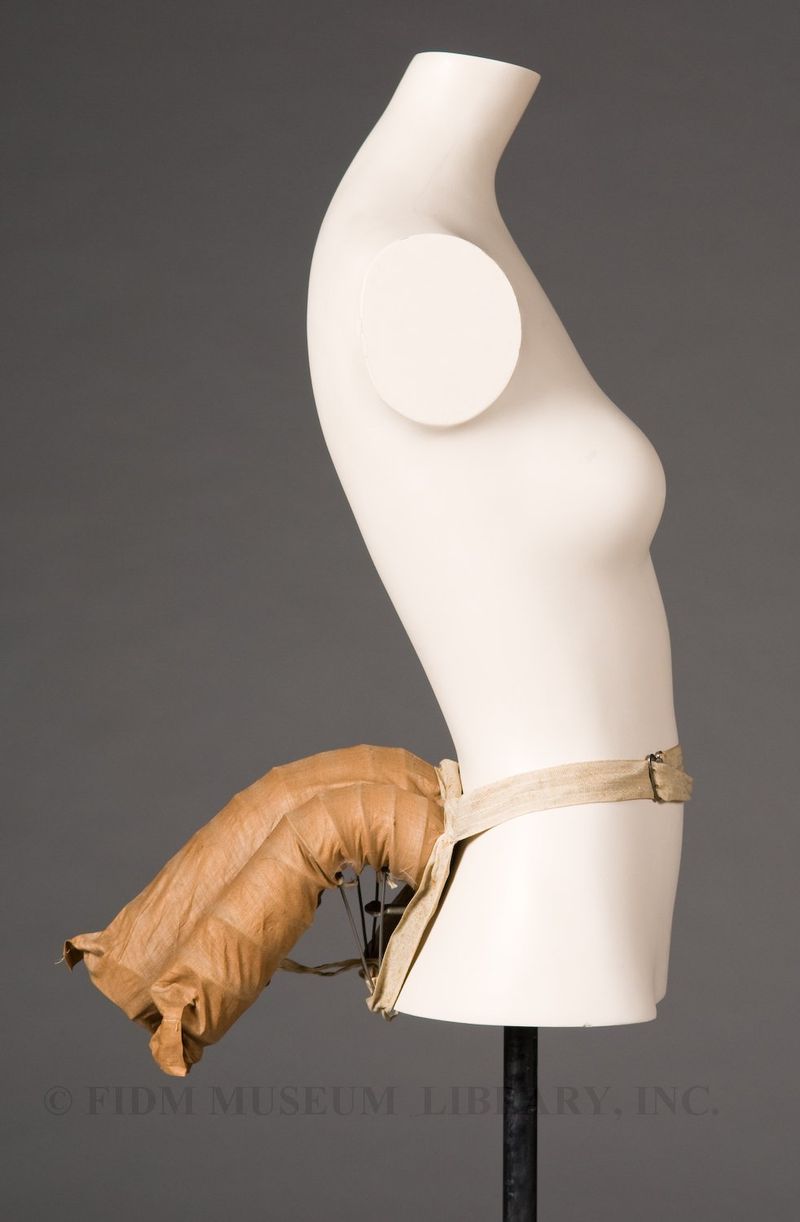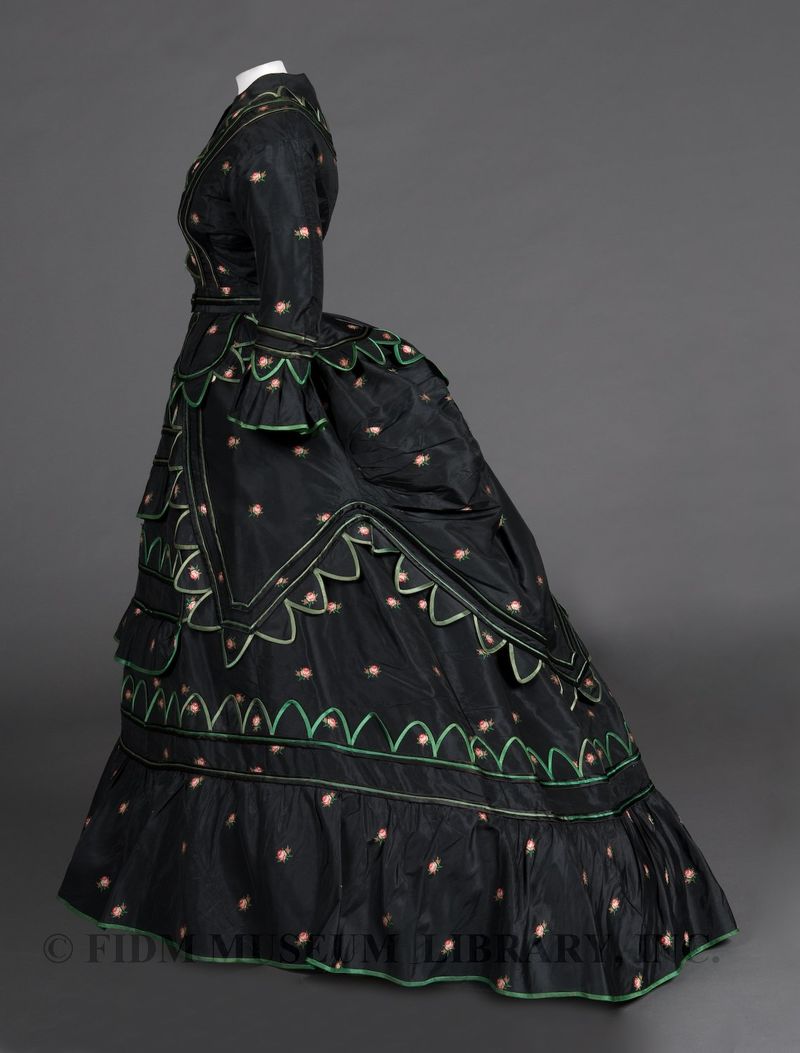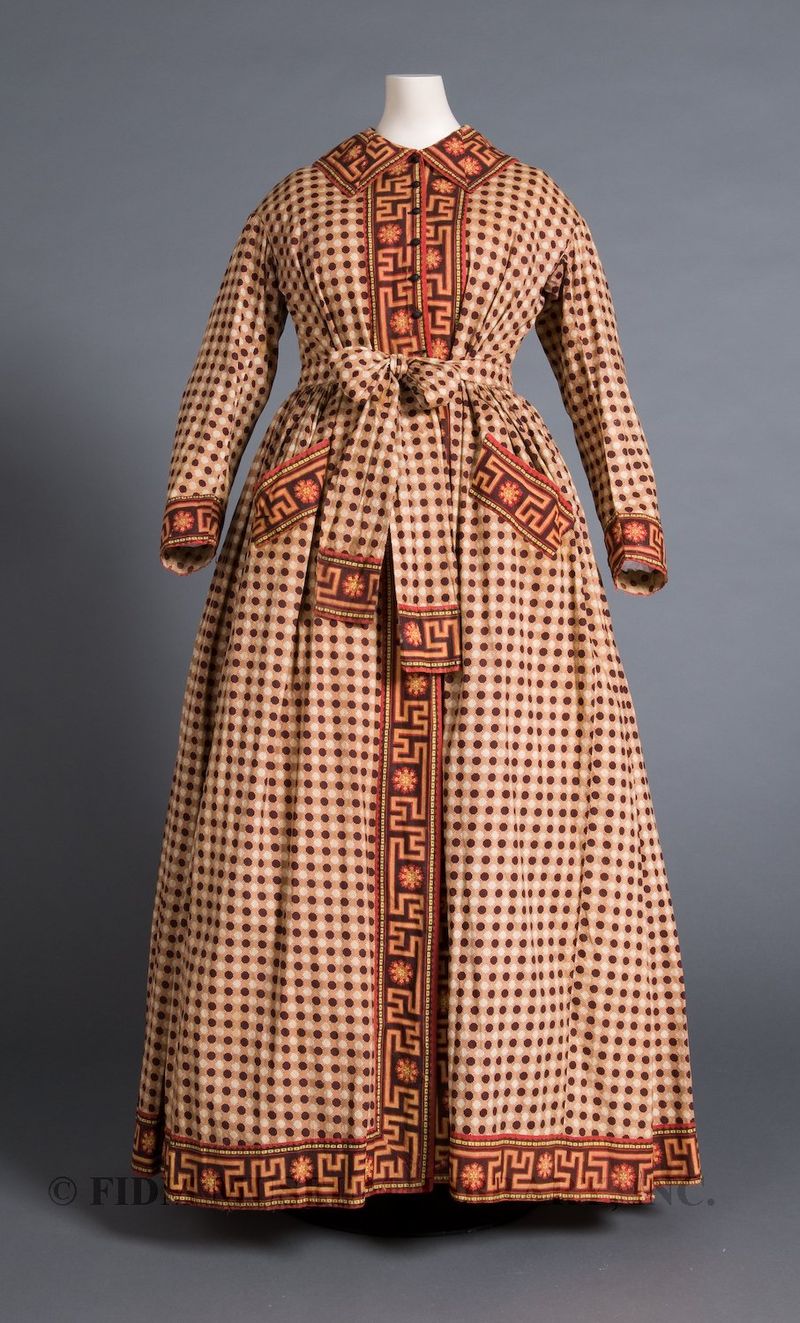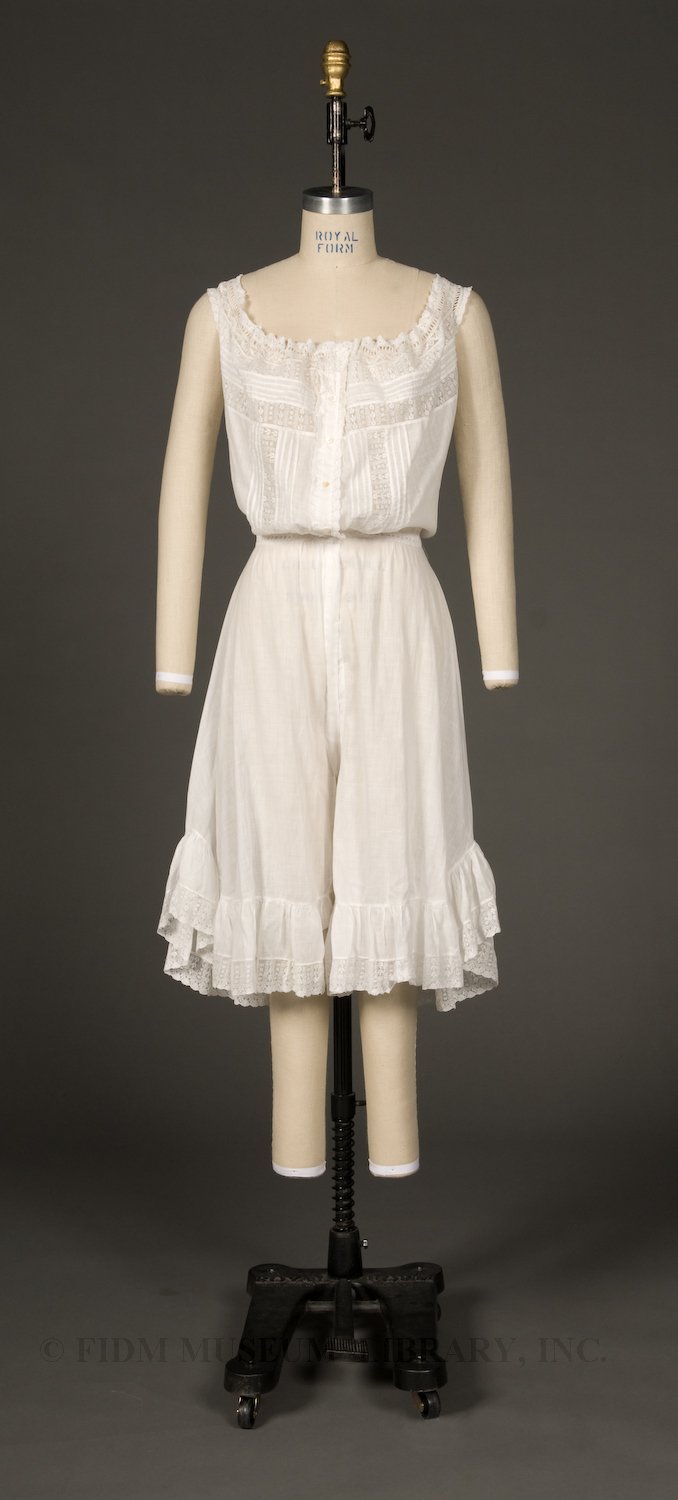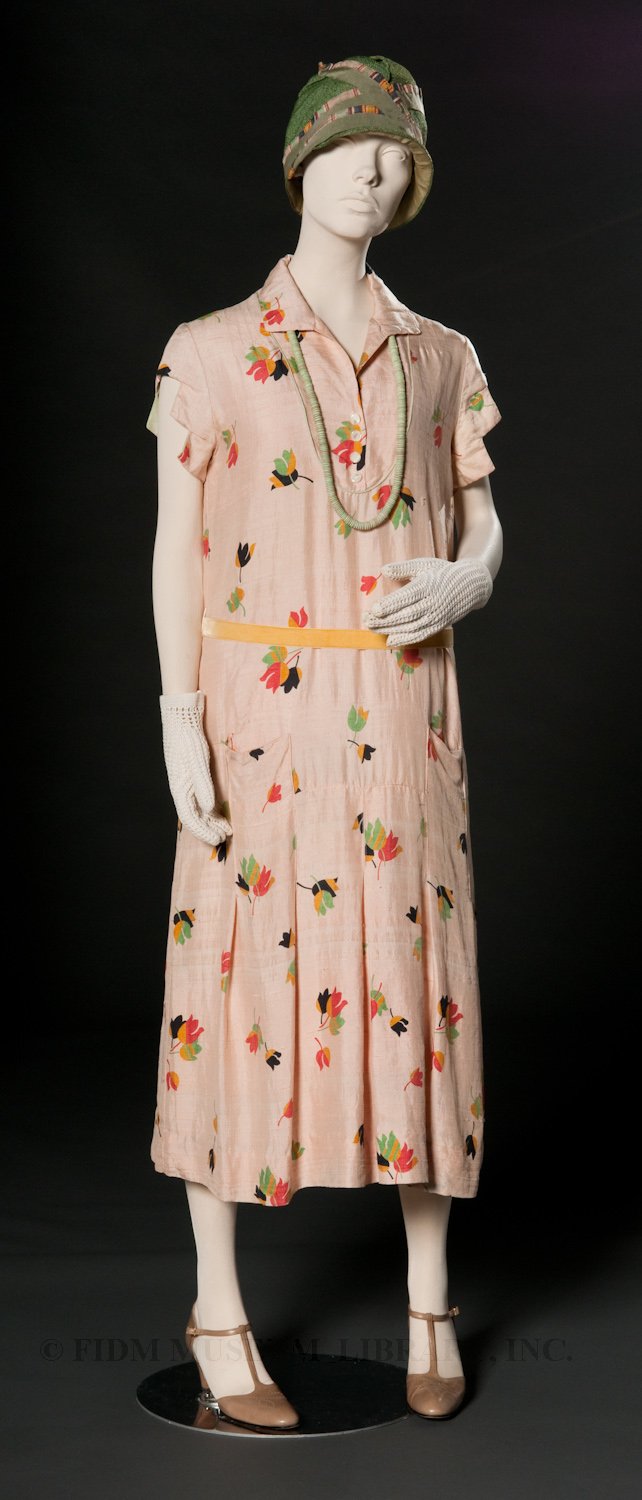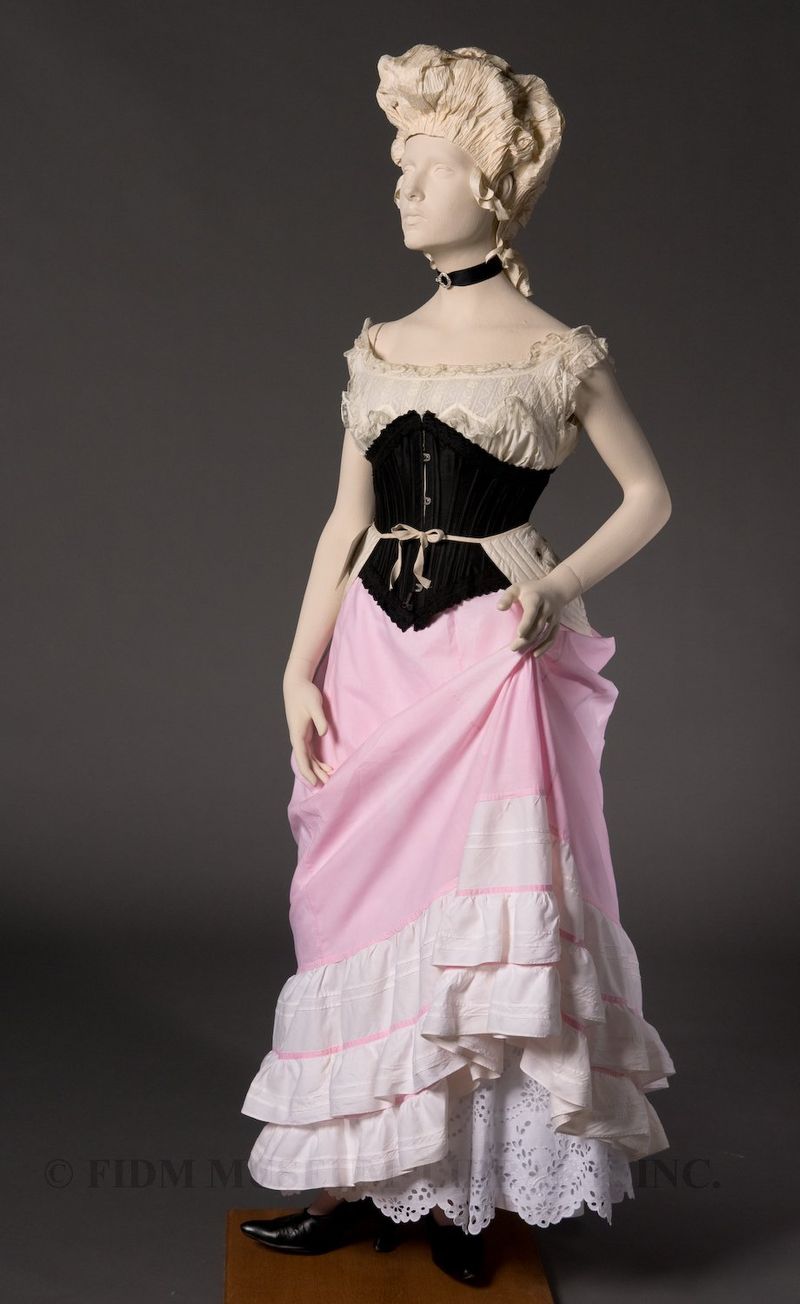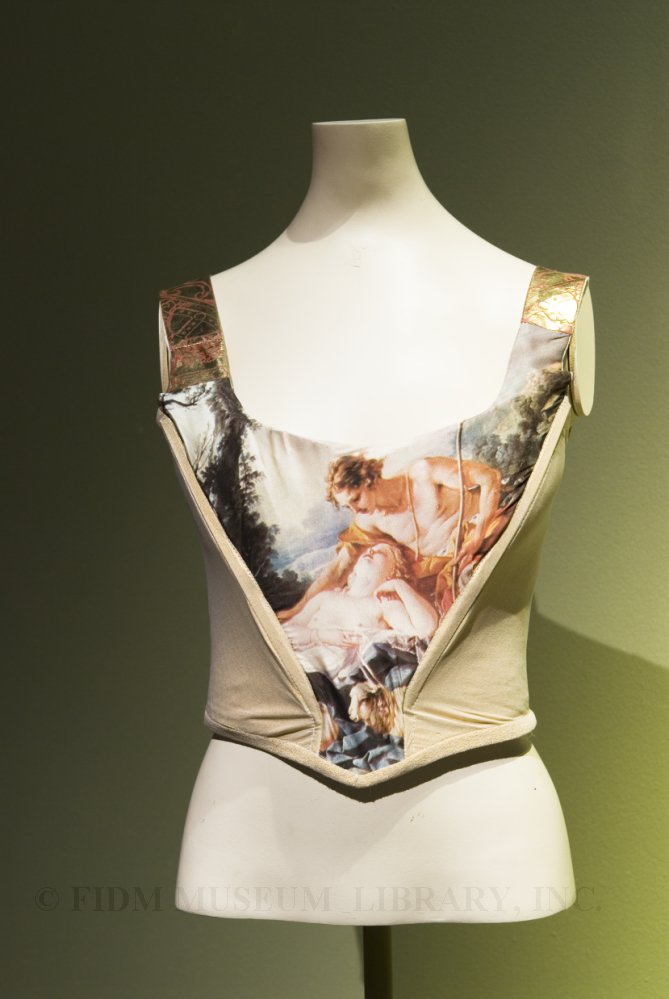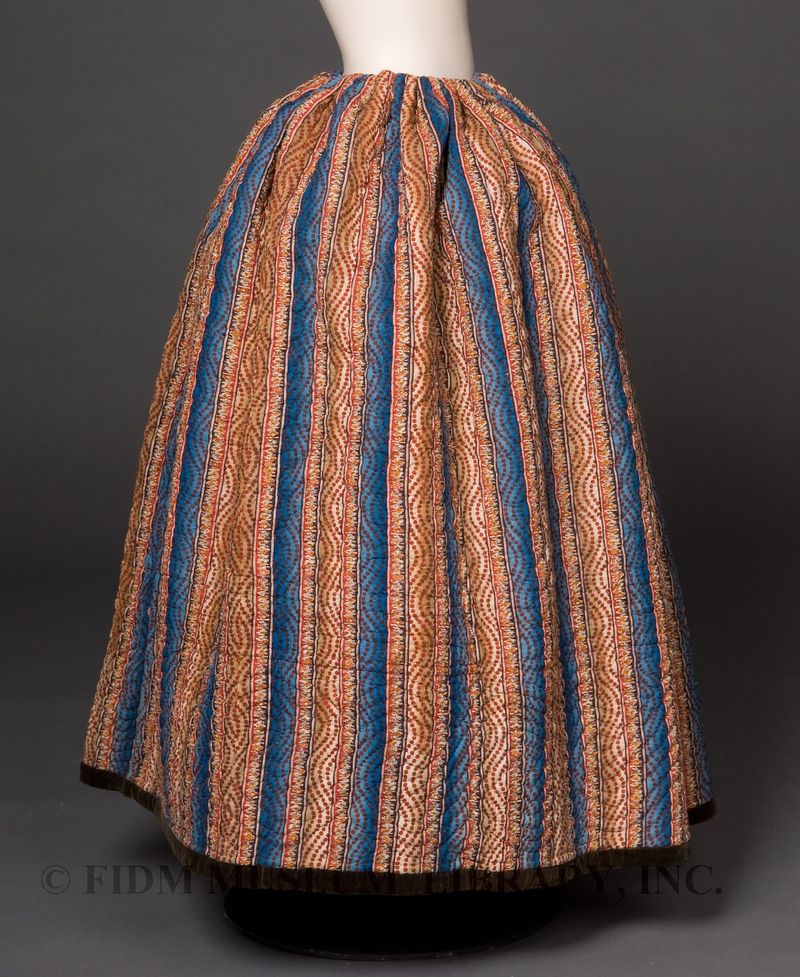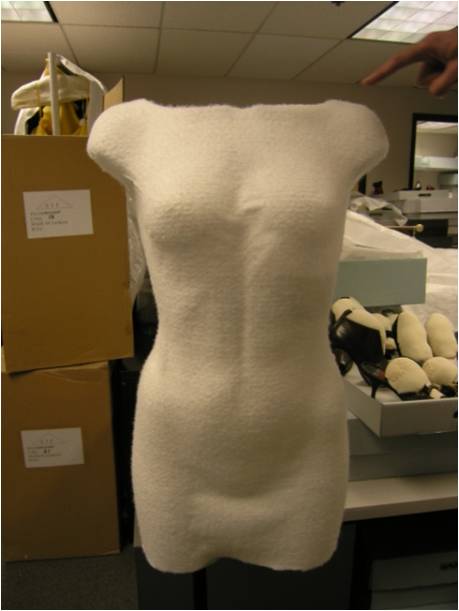This website uses cookies so that we can provide you with the best user experience possible. Cookie information is stored in your browser and performs functions such as recognising you when you return to our website and helping our team to understand which sections of the website you find most interesting and useful.
In the 1880s, the bustle made a comeback. Last seen in the previous decade, the bustle of the early-to-mid 1870s supported puffs and swags of fabric, creating a rounded fullness which often ended with a short train. Though exaggerated, this silhouette... Read Article ››
Day ensemble, 1870-72
Day ensembleSilk taffeta 1870-72 Gift of Anne Stampfer 94.661.1A-D About 1868, the crinoline silhouette went out of style. The smooth, distinctly bell-like shape of the crinoline supported skirt began to change form, with the fullness moving towards... Read Article ››
Brassiere, 1908-1910
The brassiere appeared on the fashion scene about 1904 or 1905. Of course, women wore brassiere-like garments before this date, but they went by other names depending on the time and place in which they were worn. In the 19th century, these garments... Read Article ››
Cotton wrapper, 1863-65
A careful reading of Victorian fashion periodicals and etiquette manuals reveals that each moment and every activity required a specific outfit. Though many woman surely overlapped their morning and afternoon dresses due to economic circumstances or... Read Article ››
Combination undergarments
Combination undergarments, which combined chemise and drawers into one garment, first appeared in the late 1860s or early 1870s. By the 1890s, combinations had largely replaced the long chemise worn over a separate pair of drawers. The advantage of... Read Article ››
Morning gown, c. 1895
For the Victorian woman, correct dress was an essential component of social acceptance. Women of the aristocratic classes and the nouveaux riche changed outfits multiple times each day, always with the knowledge that dress played a crucial role in determining... Read Article ››
1920s silhouette
The slim, youthful silhouette of 1920s fashion signaled the emergence of a new ideal of feminine beauty. Unlike her predecessors of the late 19th century, who favored the silhouette of a mature, well-endowed woman swathed in layers of fabric, the 1920s woman... Read Article ››
Undergarment ensemble, circa 1900
For much of the past 500 years, women have used underpinnings to mold their bodies into the dominant fashionable silhouette. The basic underpinnings usually consisted of a chemise, corset and petticoat(s). Other items, including sleeve plumpers, crinolines... Read Article ››
Vivienne Westwood corset
The task is to form the future from the materials of the past-Vivienne Westwood1For centuries, corsets were an essential, but unseen, part of a woman's wardrobe. Visible only through their shaping of the body, actual corsets were typically seen only in... Read Article ››
Quilted petticoat
Before the introduction of the cage crinoline in 1856, women typically wore multiple layers of petticoats. The petticoat layers (sometimes as many as 6!) not only shaped the skirt into a fashionable bell-shape, but also provided warmth. Between about... Read Article ››
Floating forms
A well-designed and well-installed museum exhibit appears effortless, as if the objects on display were always meant to be viewed in that exact context. Despite this apparent ease, museum exhibitions require a tremendous amount of long-range planning.... Read Article ››
Crinoline silhouette
In the mid-nineteenth century, the fashionable female silhouette included voluminous, full skirts. To achieve the desired bell-like skirt shape, women relied on multiple layers of petticoats. These petticoats were usually made of linen, cotton or flannel,... Read Article ››

